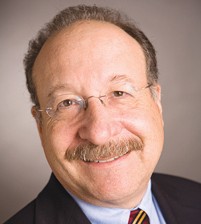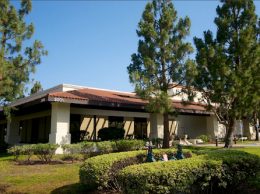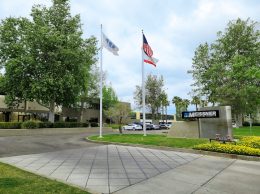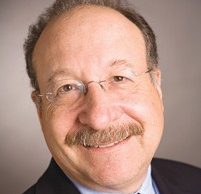
Henry Dubroff
Building solar panels for the Apollo moon missions in the 1960s, John W. “Bill” Yerkes was struck by an idea that would change the way the world thinks about electricity.
Panels that did not quite meet the exacting government standards for the Apollo mission were not as expensive to make, and they would work perfectly well in commercial applications. So Yerkes, a Stanford engineer schooled in the need for rugged but ever cheaper components during a stint at Chrysler, struck out on his own.
By the 1970s he had conceptualized most of the elements for large-scale solar applications: cheap, mass-produced panels; battery-powered controllers for off-the-grid systems; and inverters to make direct-current electricity from panels ready for the alternating current of the electric grid.
In 1975 he formed Solar Technology International in Chatsworth. A few years later under the Arco banner, the company, then based in Camarillo, hit 1 megawatt of annual production. By 1982 the company had produced a 1-megawatt grid-tied solar system.
Yerkes, a Santa Barbara resident who passed away late last month at age 79, trained or mentored many of the international leaders in the rapidly maturing solar industry. One of his proteges, former Arco colleague Raju Yenamandra, calls Yerkes “the father of the modern solar industry.”
“He was a brilliant person, a visionary and very impatient,” recalled Yenamandra, now a researcher at SolarWorld but still based at the same Camarillo location. “He was a get-it-done-yesterday kind of person.”
It takes a leader with a rare combination of vision and determination and also a persistent drive for lower-cost products to create a global power industry out of sunlight and dreams. In 1985, Yerkes left Arco to strike out on his own again, this time with a new company using cadmium telluride for solar cells.
At the time, the L.A. Times described him as a maverick who lived with his wife, Sara, in a newly constructed home in the Chatsworth hills. “A $10,000 array of photovoltaic cells on the roof is their sole source of electricity,” The Times reported.
The irony of Yerkes’ quest is that it took far more time than he ever imagined for the solar energy industry to emerge from its status as a fledgling industry.
Plunging oil prices in the mid-1980s and low natural gas prices didn’t help. Powerful utilities dragged their feet on grid parity, stalling industrial deployments for years. And until climate change emerged as an issue in the early 21st century, the social impetus for cleaner energy had not gone mainstream.
But Yerkes persisted. He built a global marketing and distribution system that well-served the Camarillo plant’s owners — Arco, Siemens, Shell and, since 2006, Germany-based SolarWorld. Yenamandra recalled that Yerkes recruited an international sales expert from Caterpillar to build off-the-grid electrical products, including lights that helped sewing machine operators work in the dark and pumps that helped farmers in Kenya irrigate newly planted banana farms.
Yerkes never went to the government for research and development funding, arguing that the cost of doing the paperwork would not be cost-effective. His greatness was due in part to his understanding that electricity costs were highly variable — a person would pay $250 per kilowatt hour to light a flashlight with batteries but expect the refrigerator at home to run for 10 cents a kilowatt hour or less. The trick was to find the right niche.
The regional economy benefited, too. Power-One, based in Camarillo and now part of ABB, is a leading designer and manufacturer of solar inverters. UC Santa Barbara professors, including John Bowers, have formed Unite to Light, a nonprofit distributing low-cost solar systems worldwide. UCSB Nobel Prize winner Alan Heeger is working on advanced thin-film solar applications.
But the plant that Yerkes and his team built did not survive the brutal shakeout in the industry, including allegations by SolarWorld and others that the Chinese priced panels at a fraction of their cost in order to gain U.S. market share. Manufacturing in Camarillo shut down a couple of years ago, and the plant’s researchers will be relocating to Oregon later this year.
Early successes meant that Yerkes was well-off, but the goal was never to pile up a fortune. He was driven by a desire to fill a human need and to innovate relentlessly. At his companies, he would wander around the shop floor asking questions or stop by the cafeteria to problem-solve with a technician or two. At conferences, young engineers would gather around to listen to him talk about his latest theories. “He was truly a visionary who saw things way before his time,” Yenamandra said.
• Contact Henry Dubroff at hdubroff@pacbiztimes.com.






 Print
Print Email
Email

















